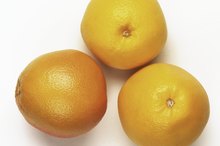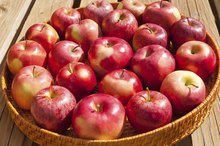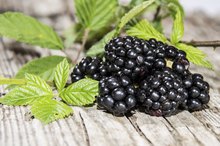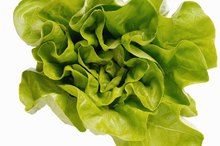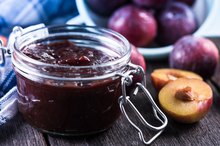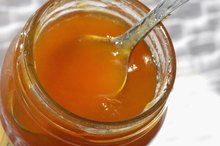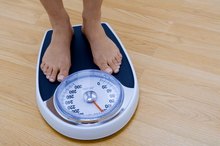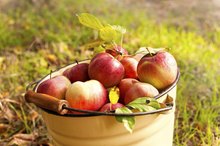Pectin & Weight Loss
Pectin’s ability to thicken jams and jellies represents the same quality responsible for its health benefits. After it enters your stomach, it forms a gelatinous mass that may support weight loss by creating a feeling of fullness. Because pectin comes from fruits and vegetables, you can also boost your pectin intake while consuming low-calorie and nutrient-rich foods.
Pectin's Characteristics
Pectin’s potential to influence weight loss comes from being a soluble fiber. Like other types of soluble fiber, it absorbs water and forms a viscous mass, which travels through your stomach and small intestine undigested. Once it reaches your large intestine, pectin adds moisture to stool, but it also fills another important role: It’s fermented by bacteria in your large intestine, which supports good bacteria and produces energy used by the colon.
Appetite Control
What Are the Benefits of Grapefruit Pectin?
Learn More
One way pectin can help you lose weight is by making you feel full. When it absorbs water and expands, it distends the stomach and triggers stretch receptors. The receptors send signals out to your brain, telling it your stomach is full. In return, your brain triggers the release of hormones that extend the sense of satiety. Pectin’s gelatinous mass also slows down gastric emptying, which means it takes longer for food to leave your stomach and enter the small intestine. This action further contributes to feeling full and satisfied.
Blood Sugar Regulation
As pectin slows the movement of digested food through the small intestine, it also moderates the rate at which sugar is absorbed into your bloodstream. Eliminating swings from high to low levels of sugar may help you lose weight two ways. When blood sugar drops too low, you feel hungry whether you need to consume more calories or not. On the flip side, high levels of blood sugar cause more insulin to be released, and insulin has a fat-sparing effect that stops your body from burning stored fat for energy, according to Colorado State University.
Foods to Choose
Water Soluble Fiber Foods
Learn More
Oranges, grapefruit and lemons are some of the best sources of pectin. After citrus fruits, good choices include apples, apricots, bananas, raspberries and blackberries. Carrots have almost as much pectin as citrus fruits. Squash, beans and sweet potatoes are other good vegetable sources. While it’s healthiest to get pectin from whole foods, supplements are generally considered to be safe. The typical dose is 500 milligrams taken three times daily right before you eat, reports the Cleveland Clinic.
Related Articles
References
- Nutrients: Effects of Dietary Fiber and Its Components on Metabolic Health
- Nutrients: Fiber and Prebiotics: Mechanisms and Health Benefits
- Harvard Medical School: Why Eating Slowly May Help You Feel Full Faster
- Colorado State University: Physiologic Effects of Insulin
- Journal of Food Science: Reassessment of Some Fruit and Vegetable Pectin Levels
- MedlinePlus: Hypoglycemia
Writer Bio
Sandi Busch received a Bachelor of Arts in psychology, then pursued training in nursing and nutrition. She taught families to plan and prepare special diets, worked as a therapeutic support specialist, and now writes about her favorite topics – nutrition, food, families and parenting – for hospitals and trade magazines.
